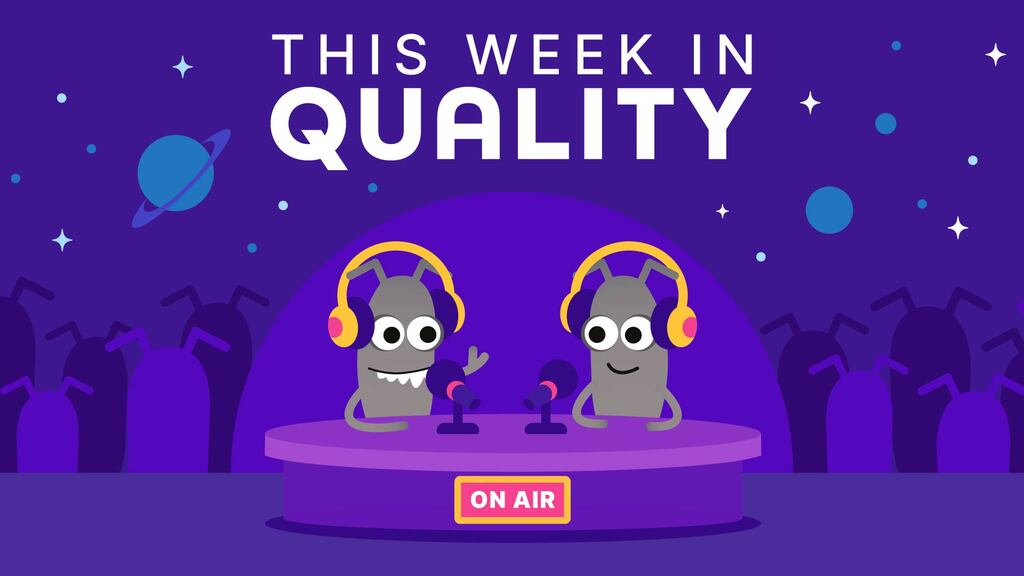The spiral approach is a philosophical and psychological path to improving the quality of your organisation’s work processes and products. The approach makes you look at yourself, your team, and your organisation, and asks: do we trust each other? And it offers a way forward.
Breaching The Wall Of The Cultural Immune System
“As a New York Times article points out, failure has been transformed from an action (I failed) to an identity (I am a failure). This is especially true in the fixed mindset.”
Dr Carol S Dweck - Mindset: Changing the Way You Think to Fulfil Your Potential.
“Nobody on the inside of that wall is ever going to listen to you; not because what you say isn’t true, but solely because you have been identified as outside that wall. Later, as his Metaphysics of Quality matured he developed a name for the wall to give it a more structured, integrated meaning. He called it a ‘Cultural immune system’.”
Robert M. Pirsig - Lila
Organisations have a wall in place called the “cultural immune system.” The cultural immune system helps create a fixed mindset and makes people scared of failure.
For change to take place this wall has to be breached. The spiral approach described in this article aims to tackle this and allow people to feel they are allowed to challenge the status quo and fail if necessary.
The spiral approach can bring down other walls too, including those created by roles, job titles, and so on. It is designed to change the way we think from a cyclical or purely linear mindset to a progressive one. It embodies the understanding that every time we make a decision or rethink an old decision we use our history to help craft our choices. We never step in the same place twice.
The Spiral Approach
If we want to move from a cyclical or linear mindset to a progressive one, we will need a new philosophy of approaching our work. I call it the spiral approach. While a spiral may look cyclical, it never ends, unlike a circle: it moves progressively outwards. We use a certain idea or thought as the center of the spiral, and as we learn more about how that idea can help us, we move outwards.

The spiral shows steps along the journey that as an individual, team and organisation you must take to be able to produce the best value to the customer. The core of the spiral is quality and strength, because we need to instill these ideas into our individuals, teams, and organisations before we can move on. Let's have a look at the inner spiral.

Quality is the core of the spiral because it is deeply personal.
“Quality doesn’t have to be defined. You understand it without definition, ahead of definition. Quality is a direct experience independent of and prior to intellectual abstractions.”
Robert M. Pirsig - Lila
As testers, we know that quality is very hard to define. We struggle to set quality benchmarks. We do our best not to let quality drop by instituting automated checks, manual scripts, and so on. But setting a single overarching benchmark of quality is nearly impossible. So instead of defining it, we should instead concentrate on building up our people so that they view quality at a higher level and aim to achieve a higher standard.
How do we get to that point? People depending on where they are in their lives will have different views on what quality is. Highly stressed and pressured individuals may have a lower view of quality: terms like “that will do” or “let's just get it out of the door” can appear. People who constantly sit in their comfort zone also can have a lower view of quality. However, people who have a healthy amount of pressure with regard to their work and are allowed to grow have a higher view of quality. They aim for better all the time.
By nurturing the individual team member, which means ensuring their contentment on the job with a balance of active work and downtime for inquiry and professional development, they start to instill quality into the product without even trying. It is worth spiraling around this core concept for several loops. It is the center of the spiral: if it is not stable, further progression will be impossible. If your organisation cannot seem to create a strong core of contented team members, consider that expectations regarding goals and pressure may be set too high, or that you simply aren’t nurturing your people enough.
Inner And Outer Strength
There are two types of strength: inner and outer.
Inner strength is the ability to look at yourself dispassionately, acknowledging flaws and mistakes and crediting strengths and successes. We do not always nurture it. We sometimes don’t want to admit our faults but it is a necessary step as the next step outer strength can depend on it. Cultivating and using outer strength, the next point in the spiral is in part reliant on our inner strength.
Outer strength manifests as the ability to call out mistakes and ask hard questions. This is likely to cause conflict, which as adults we must face and accept. In the past, I’ve been known to get angry when confronted: how dare someone challenge me like this! It could be a really bad time in your life and you may not be conducive to having someone challenge you. Anger at confrontation can scare other people, but I have learned that sometimes I just need to walk away, calm down, and try to see it from the other person's point of view (inner strength). Then I can come back and continue the conversation.
Inner and outer strength can be improved only with practice. Self reflection increases inner strength; keeping up good communication and talking to each other will build up outer strength. As we practice these steps, our standard for quality will increase; we start to feel we can make a real difference and we are being listened to as an individual, team and organisation. By spiraling around these concepts we are preparing ourselves for the next step in our journey, diversity.
Diversity
“The division of cognitive labor is fundamental to the way cognition evolved and the way it works today. The ability to share knowledge across a community is what has allowed us to go to the moon, to build cars and freeways, to make milk shakes and movies, to veg out in front of the TV, to do everything that we can do by virtue of living in society.”
“One common finding is that when people of like minds discuss an issue together, they become more polarized. That is, whatever view they had before the discussion, they are even more extreme in their support of it after the discussion.”
Steven Slomand and Philip Fernbach - The Knowledge Illusion
As human beings, we have a great history of accomplishing enormous projects by working together as a team, organisation, and as a society. At the same time, as human beings, we have an awful history of creating dangerous social mechanisms with a uniform ideology. Why the contradiction? When we work together we can accomplish quicker and better because we combine our knowledge. This can create and nurture ideas that add to value for the customer.
There can be too much of a good thing, however: an extreme case of hive mind is unexamined groupthink. One symptom of groupthink is a falloff in questioning and challenging poorly thought-out ideas or chronic failure to meet goals. This inevitably leads to a drop in the value delivered to the customer.
So we have a predicament: we want to be able to work as a larger group because more can be achieved, but we don’t want the group to get so used to each other that the resulting familiarity becomes dangerous to the individual, team or organisation. This is where diversity becomes crucial. Having members from all walks of life enriches a team and increases the resistance to becoming a hive mind with no ability to question itself. So with the practice of inner and outer strength, knowing that we need to confront and question, we also have the different experiences that diversity brings. With diversity, teams and organisations can ensure the maintenance of a questioning and challenging spirit.
We shouldn’t need to spiral around this concept for long; it is common sense. Unfortunately, looking at board rooms and teams within the software environment it seems we do have to spiral around this for a while. The only way this can be changed is by using your outer strength and challenging your team and organisation about it. Also have the inner strength to challenge yourself: how willing are you, really, to accept the challenges of increased diversity? Are you willing to stand behind people of different ancestry, gender, educational or class background as THEY challenge the status quo? The rewards of greater diversity outweigh the imagined discomfort to the individual.
The four steps outlined above, organizational support of the individual, cultivation of inner and outer strength, and increased diversity, comprise the inner spiral. They can be the most difficult to implement but as you put them into practice the benefits will become clear.

Integrity
Integrity increases with inner and outer strength. However, it is worthy of a step unto itself. Should you find that integrity is wanting, your organisation may need to spiral around the concepts of inner and outer strength a while longer. It is better to approach integrity at the organisational level, working back into the inner spiral as needed.
“Firm adherence to a code of especially moral or artistic values”
Integrity definition - Merriam Webster
Organisational integrity must be on a par with that of its individuals and teams. It is easier to propagate a high standard down to teams and individuals than it is for an individual to propagate their high standard up to the team and organisation. A high standard of integrity means that organisations can ask, and honestly answer, tough questions on how to improve quality.
Effective Communication
“No matter how effectively I transmit information, it will not communicate to you if you don’t receive it.”
Alan Barker - Improve Your Communication Skills
Of the qualities of the outer spiral, effective communication is the most difficult to master.
Communication consists of transmission and reception: both must be effective for communication to succeed. Noise of different types (sounds external to the conversation, excessive information, too many people talking at once) inhibits effective communication.
Let’s take an online group messaging application like Slack as an example. The would-be transmitter enters some information and hopes that it will be understood. However, several others then enter related but distinct messages, and someone enters a message that is completely offtopic. At this point, the channel has devolved into white noise and it’s unlikely that anyone understood the original poster’s message.
In the example above, it’s possible to confirm transmission. Asking for emoji reactions to your message allows you to see who has read it. You could also ask questions or take a poll of the people in the channel. As a would-be transmitter of information, it typically isn’t enough just to say something: you should confirm receipt and ask for feedback.
Similarly, as a would-be receiver of information, your role is not an utterly passive one. If you haven’t understood something, you should ask for clarification. If the transmitter of information asks for feedback or confirmation, you can give it. And you should make sure that follow-up posts by the transmitter or other commenters make sense to you.
Effective communication has been defined by Alan Barker as “the process of creating shared understanding.” It can only enhance quality.
Owning Decisions
With greater integrity and strength both inner and outer, individuals, teams, and organisations will be much more likely to own decisions, even those that in retrospect weren’t the “best.”
A brief note: if you do not record or journal the steps you take toward quality, you are likely to forget. Make records of decisions made as well as the foundations for them. Later, you can revisit them as an individual, team, or organisation to reflect on successes and room for improvement.
The Spiral In Action: Positive And Negative Powers Of Example
Trust, an important result of the spiral, flows up and down the chain of command. At the top, leaders will trust their people and teams to make sound decisions without micromanagement. The trust at the top allows people and teams to proceed with their work in a way that is not fear-driven.
The process of acknowledging and deciding whether and when to act on technical debt is evidence of a successful quality spiral. At the individual level, you could tackle it right away or accept that you have done the best you can for now and any improvements can be covered as a team later on. Making this decision as a team and recording it explicitly, even if the work is not done in the current sprint, means that the individual AND the team now take responsibility.
Negative powers of example often emerge in the realm of time estimates. A project manager I once knew believed that automatic doubling of the team’s time estimate was the way to go. This reflects a system devoid of trust and ultimately it harms everyone involved.
Instead, estimates can be seen for what they are: educated guesses. The organisation acknowledges the estimate and because it trusts the team it knows the estimate was made honestly and revisions will be communicated promptly.
A Spiral Never Ends
A spiral never ends. That's all there is to it. No step is ever really complete; we are all apprentices forever. The difference is that with a progressive mindset we know we are moving forward overall, and each time we revisit a step to spiral around it we are starting from a different perspective, so our learning outcomes will be different.
Further Reading
For another perspective on cultural change that enhances quality, see Saved By Antifragile: A Story of Networked Learning at TeliaSonera Finland by Sami Soderblöm.





